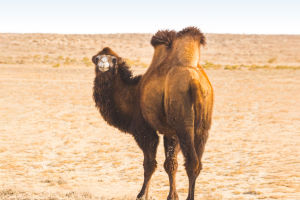If you share your home with curious cats or playful dogs, you probably already know how much they love to explore—and sometimes nibble—your indoor plants.
But did you know some popular houseplants can be dangerous or even toxic to pets?
The good news is that with a little knowledge, you can create a green, pet-friendly home where both your plants and furry friends thrive. Let's dive into what makes certain plants safe or risky, and how to protect your pets without giving up your love of greenery.
Why Pet Safety Matters with Houseplants
It's easy to think of plants as harmless décor, but many common varieties contain substances that can cause a range of problems for pets—from mild stomach upset to serious poisoning.
Thousands of calls to poison control centers each year involve pets ingesting toxic plants. Cats and dogs tend to chew leaves or dig in soil out of curiosity or boredom, so knowing which plants pose risks is key to prevention.
Veterinarian Dr. Emily Rodriguez explains, "Even a small bite of some plants can cause vomiting, diarrhea, or more severe neurological and cardiac symptoms in pets. The risk is higher for kittens and puppies because of their size."
1. Common Toxic Plants to Avoid
Certain popular indoor plants deserve a special warning. Here are some of the most common ones that you should either keep well out of reach or avoid entirely if you have pets:
1. Dieffenbachia (Dumb Cane)
This plant contains calcium oxalate crystals that irritate the mouth and throat, causing drooling, difficulty swallowing, and swelling.
2. Sansevieria (Snake Plant)
While a favorite for easy care, snake plants can cause nausea, vomiting, and diarrhea if ingested.
3. Philodendron
Similar to dieffenbachia, philodendrons contain calcium oxalate crystals leading to mouth irritation and digestive upset.
4. Peace Lily (Spathiphyllum)
Though beautiful, peace lilies can cause irritation and swelling in pets' mouths and gastrointestinal distress.
5. Pothos (Epipremnum aureum)
Pothos leaves contain toxins that lead to mouth irritation and vomiting.
If your pet shows any signs of chewing on these plants—like pawing at their mouth, excessive drooling, or vomiting—it's important to contact your vet immediately.
2. Plants That Are Safe for Pets
Thankfully, not all green companions are dangerous. Many plants bring beauty and fresh air without posing a threat to your furry friends. Here are a few to consider:
1. Spider Plant (Chlorophytum comosum)
Non-toxic and often a favorite for pets to bat at, spider plants are safe and forgiving.
2. Boston Fern (Nephrolepis exaltata)
This lush fern is safe and can even help improve indoor air quality.
3. Areca Palm (Dypsis lutescens)
A popular decorative palm that is pet-safe and adds a tropical vibe.
4. Calathea
Known for its vibrant leaf patterns, calatheas are safe and non-toxic.
5. Bamboo Palm (Chamaedorea seifrizii)
Another pet-friendly palm that thrives indoors.
While these plants are considered safe, it's still a good idea to discourage pets from chewing plants to avoid digestive upset from soil or fertilizers.
3. Creating a Pet-Friendly Plant Space
Balancing your love of plants with pet safety means smart placement and habits:
1. Elevate toxic plants: Use shelves or hanging planters out of your pet's reach.
2. Distract with pet grass: Growing cat grass or wheatgrass can satisfy their chewing urges.
3. Use deterrents: Pet-safe sprays can discourage nibbling.
4. Choose non-toxic plants first: Build your collection around pet-safe options.
Dr. Rodriguez suggests, "If you're unsure about a plant's safety, check the ASPCA's comprehensive online database before bringing it home."
4. What to Do If Your Pet Eats a Toxic Plant
If you suspect your pet has ingested a toxic plant:
1. Try to identify the plant and how much was eaten.
2. Call your veterinarian or emergency pet poison hotline immediately.
3. Follow their instructions—sometimes they'll ask you to bring your pet in for observation or treatment.
Fast response can make all the difference in outcomes.
Your plants and pets both add warmth and life to your home—but keeping everyone safe takes awareness and action. By choosing pet-friendly plants and taking a few precautions, you can enjoy a vibrant indoor garden without worry.
Have you ever had a close call with a toxic plant or found a pet-safe favorite? Share your stories and tips—let's help each other create happy, healthy homes for all family members.


